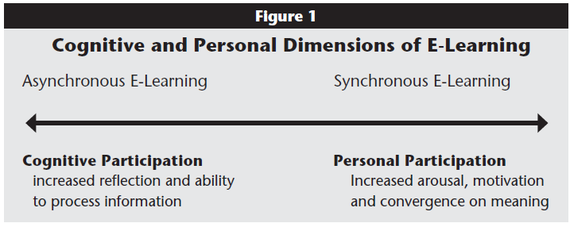Co-authored by Lakshmi, a Mobicip blogger who is just as passionately opinionated about the juxtaposition of technology, parenting and education.
A recent (2014) report, "Keeping Pace with K-12 Digital Learning" by the Evergreen Education Group points out that in the past academic year (2013-2014), more than 316,000 students attended online schools in USA. Virtual schools are operative in 26 states in the country, and digital learning encompasses fully online schools, supplemental online courses and schools that have integrated digital content and tools into their existing instructional setup. This is not surprising considering that a meta-analysis and review of literature conducted by the U.S. Department of Education found that students in online learning conditions (especially under blended instruction but even in 100 percent online schools) performed better than those receiving face-to-face instruction in technology-unassisted educational programmes. This study has by large provided the impetus to design and implement online and blended approaches to school level education.
The types of digital tools used in blended or fully online education vary significantly between high schools, middle schools, and elementary school levels. In elementary school, digital tools are used only in a classroom, with full teacher control (or parental control, in the event of homeschooling), and mainly in the areas of math and ELA. Middle school uses slightly more digital tools to set the stage for high school that uses the widest range of digital options including online courses, credit recovery courses, independent online study programs and supplementary digital content to augment face-to-face classes.
Online schooling is not new as a concept as it falls within the purview of distance learning that has been around for many decades now; it is considered the fifth generation of distance education. However, online education is very different in its scope from earlier generations such as correspondence courses, and televised broadcasts and video conferencing in that it can offer both synchronous instruction where students and instructors interact in real time and asynchronous instruction where students learn at their own pace and with their own time schedules. A judicious combination of these two types of learning enables both cognitive and personal participation.
- Frees the learner and instructor from limitations of time and space.
- Enables dynamic interaction that helps establish constructive learning and provide opportunities for cooperative learning.
- Virtuality eliminates awkwardness associated with face-to-face communication in traditional classrooms, especially for introverted or shy students (references here, here and here).
- Help overcome teacher shortages and in addition enable access to high-quality teachers, because of obviation of geographic constraints.
- Enables customization and optimization of education
- Allows innovation in that new learning tools could be envisaged and developed that use the digital tools available to make education more interesting and efficient.
But it is not all roses, the challenges to digital schooling are very real, and ironically, the benefits listed above can themselves become deterrents. For example the geographic, temporal and psychological isolation can result in limited opportunity for the transmission of non-verbal messages, especially in primarily text-based courses which can foster feelings of disconnectedness in students. This could adversely affect learning outcomes.
Beyond the obvious "availability of technology", there are other factors that affect digital schooling. An important factor is the attitude of the learner towards digital education. A positive attitude toward technology, for example, when the student is not intimidated by the complexity of technology, will obviously result in a better and more constructive digital school environment.
A dynamic interaction between teacher and student is possible in e-Learning, but is not a requisite. Without conspicuous exchanges between teacher and student, there is higher risk of distractions and difficulty in concentrating. Thus, it is imperative that the mechanism for interaction in a digital school be meticulously designed to improve frequency, quality, and promptness of interactions.
Teacher effectiveness is a strong determiner of differences in student learning that far outweighs the effects of class size and heterogeneity. There is no reason to expect that teacher preparation is any less critical in digital schooling. While it is possible for an online student to access the best teacher in the field, there may be very few such teachers, who may be burdened with a large number of students benefiting from her expertise, resulting in reduced dynamic interaction, much like a brick-and-mortar school that has a large student to teacher ratio.
Another serious concern when dealing with a cyber school is the possible lack of social life for virtual students. Or is it? A few years ago, there were serious concerns about socialization behaviour among home schooled children. Conflicting results were seen in scientific studies, but the majority of the studies seemed to point to the fact that home schooled children are not socially any more backward than mainstream school students or are perhaps even better because of absence of damaging peer influence. There is thus no reason to believe that digital schooling would adversely affect social skills any more than general digitization of life itself does.
What is the verdict then? Is digital schooling better than conventional schools? The question is ideological and is built on the encompassing argument of what education itself is. Although it is easy to denounce the digital school (or brick and mortar school) with compelling reasons, we should be wary of outweighing the interests of technology over other social, cultural, and political concerns (or vice versa). Given that the conventional academy has existed over centuries and withstood the travails of time, there is no reason to believe that "digital schools" would overturn the conventional face-to-face schooling system in the near future, but will undoubtedly serve to compliment it.
Image credit: Educause Quarterly

